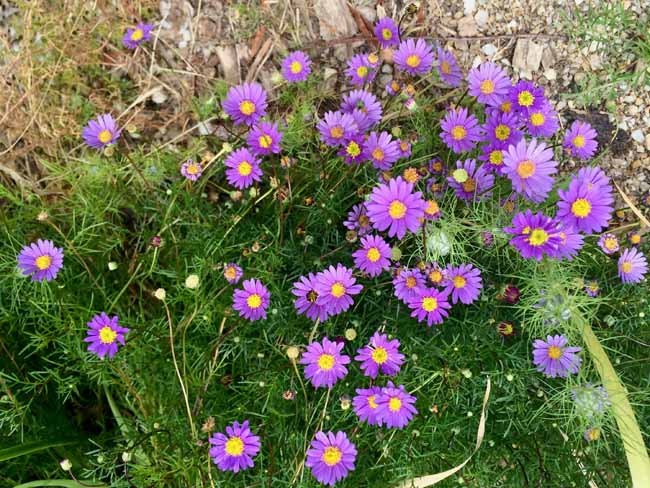Living Mulch: Waterwise, Firewise & Seriously Good Looking
Mulching the garden to cut-back on water-use is enshrined in garden lore. Protecting the soil from direct sunlight prevents it from getting hot and so reduces evaporation of precious soil moisture. Nothing beats a thick layer of Lucerne or Pea Straw in a veggie garden to keep the soil cool and moist in summer. And bush mulch or wood chips are champions of native and ornamental gardens for improving water efficiency and soil quality.
Unfortunately, the use of organic mulches has a serious downside. The CFA argues that flammable mulches such as straw, chips and leaf litter should be avoided within the defendable space around a house as they can all ingnite from ember attack during a bushfire. Gravel mulches are increasingly popular as a non-flammable mulch solution. But over time, gravel can accumulate a layer of leaf litter that is difficult to rake up. And gravel comes at financial and environmental cost.
So, what do we do if we don’t want our homes to be surrounded by a hot and harsh paved desert? An alternative to chips, straw or stone is to use plants themselves. Many native Australian ground covers can function as fire retardants as they have foliage of low flammability. They also carpet the ground, reducing water loss and keeping the soil alive. Further, living mulches help to suppress weeds, provide habitat and food for garden birds and insects and they are a beautiful layer in the garden.
Here are some of my favourite indigenous (local) ground covers. All species listed are low water-use and low flammability (i.e. they don’t burn readily or they slow the passage of a fire). Please remember that no plant is completely inflammable and all can burn under the right conditions. Some watering during extended dry or a heat wave will keep plants actively growing and this will improve their fire-retardant qualities.
 Cut-leaf Daisy (Brachyscome multifida)
Cut-leaf Daisy (Brachyscome multifida)
Feathery foliage and cheerful flowers through most of the year; grows in semi-shade to full sun, requires some moisture. There are many varieties with flower colours ranging from white to purple.
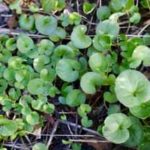 Kidney Weed (Dichondra repens)
Kidney Weed (Dichondra repens)
Fresh green, kidney shaped leaves carpet the ground and spread by creeping stems. Best in shade but can tolerate full sun if soil is moist; will come back after near death during drought.
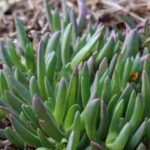 Inland Pigface (Carpobrotus modestus, closeup)
Inland Pigface (Carpobrotus modestus, closeup)
Succulent foliage, pink flowers from September to October; part-shade to full sun. Slower to establish and spread than Karkalla (pictured right), so easier to manage in the garden.
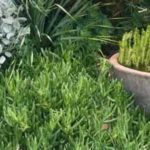 Karkalla (Carpobrotus rossii, foreground)
Karkalla (Carpobrotus rossii, foreground)
Succulent foliage, tolerates part shade to-full sun; drought tolerant once established; covered in bright pink flowers from September to January. Can grow and spread vigorously.
 Ruby Saltbush (Enchylaena tomentosa closeup)
Ruby Saltbush (Enchylaena tomentosa closeup)
Succulent grey coloured foliage; very drought tolerant; grows in semi-shade to full sun; pretty, bright red or yellow edible berries. Prostrate and shrub-like forms are available.
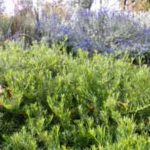 Creeping Boobialla (Myoporum parvifolium)
Creeping Boobialla (Myoporum parvifolium)
A fast growing and drought tolerant plant, white star flowers in Spring and Summer; vigorous, rejuvenate with a hard prune.
The author, Cassia Read, is a Plant Ecologist and Garden Designer (Emerging Landscapes)


